Walter Tull
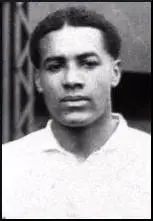
Walter Tull, the son of Daniel Tull, was born at 57 Walton Road, Folkestone, on 28th April 1888. Walter's father, the son of a slave, had arrived from Barbados in 1876 and had found work as a carpenter.
Daniel Tull married Alice Elizabeth Palmer, a young woman from Hougham. Over the next few years the couple had six children. (1) In 1895, when Walter Tull was seven, his mother died of cancer. A year later his father married Alice's cousin, Clara Palmer. She gave birth to a daughter Miriam, on 11th September 1897. Three months later Daniel died from heart disease.
The stepmother was unable to cope with so many children. The resident minister of Grace Hill Wesleyan Chapel, recommended that the two boys of school-age, Walter and Edward, should be sent to the Children's Home and Orphanage (CHO) in Bethnal Green. "Placing the two school-age boys in the home, it was hoped, would prevent the family becoming destitute. The eldest son William was working, and could therefore make his weekly contribution to the family pot, while Alice's two girls - Cecilia, 13 and Elsie, 6 - could help Clara with baby Miriam and the domestic chores. In this set-up, Edward and Walter were liabilities: extra mouths to feed and bodies to clothe." (2)
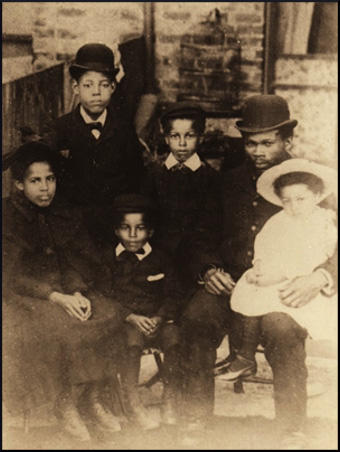
Walter, Edward, Daniel and Elsie (c. 1896).
A letter was sent from the Elham Union to Reverend Stephenson, the man who ran the Methodist orphanage, in January, 1898: "The father of these children was a negro and they are consequently coloured children. I do not know if you are aware of this or whether it will in any way affect the application?" (3) Stephenson replied that it made no difference at all. However, the orphanage was only willing to accept the boys as long as the Elham Union (the Poor Law parish upon which the Tull family relied for money to survive) should continue to contribute towards the boys' upkeep once they had entered the orphanage. The Folkestone Poor Law Guardians eventually agreed to subsidize the living expenses of the boys at the rate of four shillings each per week (plus a suit when they reached 21).
Methodist Children's Home
Edward and Walter Tull lived in the orphanage for the next two years. Clara Tull did have the right to claim the boys back. However, if she did, she had to pay eight shillings per week times the length of duration in the orphanage. This meant it was virtually impossible to raise the money needed to reclaim her children. These conditions had to be agreed before the children could even be considered for acceptance into the Children's Home and Orphanage (CHO).
The CHO had the right to send the boys abroad. Over a ten year period they sent 2,000 children to Canada "in its mission of empire-building". However, Edward and Walter did not suffer this fate. Instead they were kept by Stephenson in Bethnal Green. He was on record as saying that he had three aims for children placed in his care: "to teach them a moral code based upon Wesleyan Methodist principles; to provide a basic, elementary education; and to equip boys with a trade and girls with domestic skills". (4)
The CHO formed a choir and the boys were taken on money-raising singing tours. James Warnock, a dentist, spotted Edward Tull during a performance in Glasgow. He arranged to adopt him and his surname was changed to Tull-Warnock. (5) According to the minister of the Claremont Street Wesleyan Church, Warnock "whose clientele is mainly among the poorer people" promised to educate him in dentistry and "treat him as a son". (6) Walter was devastated by the loss of his brother but Edward's parents did what they could to help the boys keep in contact and in July 1903 they sent him 52 shillings to pay for his fare to Scotland.
Walter Tull was apprenticed in the CHO print shop and after he left school at 14 he found work in the printing industry. His ambition was to "get a place on one of the newspapers". He loved playing football and was a member of the Orphanage football team. At the age of 20 it was suggested he should have a trial with Clapton, a successful East London amateur club. He was considered a promising prospect and in October 1908, he was selected to play for the first team at inside-left. That season Clapton won the Amateur Cup, the London Senior Cup and the London County Amateur Cup. The Football Star praised Tull's "clever footwork" and described him as being the "catch of the season". (7)
Tottenham Hotspur
At the end of the 1908-1909 season Walter Tull was invited to join Tottenham Hotspur, one of the most important clubs in the country. It was a meteoric rise for the young Tull, as it was only four months since making his debut for Clapton's first team. He was invited to go on tour of South America with the club. In May 1909 he played games in Argentina and Uruguay. In a letter he wrote to a friend he commented that he was suffering from "sunstroke and feeling very queer for a few days." According to the English-language daily newspaper the Buenos Aires Herald the players complained that "none of the waiters spoke English". (8)
On his return he was offered a contract to play for Tottenham Hotspur. This created problems for Tull. As Phil Vasili, the author of Colouring Over the White Line (2000), has pointed out: "At the CHO he would have been trained into the Methodist ethos of Muscular Christianity - playing games to develop a fit body and compliant attitude of mind - a doctrine that inferred that being paid to play any sport misses the point of what playing is all about. Muscular Christianity, for the Methodists, was about character building. To play football for wages would change the nature of the game and its players, making profit/winning the ultimate objective rather than the development of a moral character." (9)
On 20th July, 1909, he was paid a £10 signing-on fee (the maximum allowed). Tull was also paid the maximum wage of £4 per week. This had been imposed by the the Football Association in May 1900. It also abolished the paying of all bonuses to players. These restrictions upset professional footballers and in January 1909, the players formed the Association Football Players Union. Led by Billy Meredith, Charlie Roberts, Charlie Sagar, Sandy Turnbull, the leading players at Manchester United, the AFPU threatened strike action unless they were allowed to negotiate their own wages. (10) The AFPU continued to have negotiations with the Football Association but in April 1909 these came to an end without agreement. In June the FA ordered that all players should leave the AFPU. They were warned that if they did not do so by the 1st July, their registrations as professionals would be cancelled. It is therefore highly unlikely that Tull joined the AFPU.
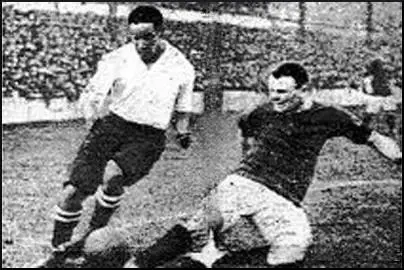
Walter Tull was only the second black man to play professional football in Britain. The first was Arthur Wharton, who signed for Preston North End in 1886. At the time Wharton held the world record for the 100 yards and was was the first black athlete to win an AAA championship. (11) However, he suffered considerable prejudice from the football community. Athletic News, the leading football newspaper in the country, commented: "Good judges say that if Wharton keeps goal for Preston North End in their English Cup tie the odds will be considerably lengthened against them. I am of the same opinion ... Is the darkie's pate too thick for it to dawn upon him that between the posts is no place for a skylark? By some it's called coolness - bosh!" (12)
Tottenham Hotspur had just been promoted to the First Division of the Football League. Tull made his debut against Sunderland. Spurs lost 3-1 and they suffered a second defeat against Everton the following week. They got their first point with a 2-2 draw against Manchester United. In this game Tull caused the opposition defence serious problems and was brought down for a penalty.
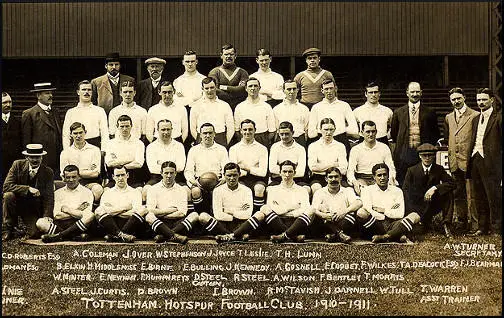
Tull got considerable praise for this performance against Manchester United. Jeffrey Green, the author of Black Edwardians (1998) commented: "Walter Tull's first match for Spurs was at their first division debut in 1909. The London team had crowds that numbered thirty thousand, and they thrilled to Tull's skills. He was an inside forward, with the role of supplying the winger with good passes. The Daily Chronicle observed that Tull was a class above many of his team mates. It was felt that had Spurs obtained a decent winger then the combination would have been the best in England. Newspaper reports of Spurs matches refer to Tull as 'West Indian' and 'darkie'. " (13)
One national newspaper, The Daily Chronicle, reported on 9th October, 1909 that "Tull's display on Saturday must have astounded everyone who saw it. Such perfect coolness, such judicious waiting for a fraction of a second in order to get a pass in not before a defender has worked to a false position, and such accuracy of strength in passing I have not seen for a long time. During the first half, Tull just compelled Curtis to play a good game, for the outside-right was plied with a series of passes that made it almost impossible for him to do anything other than well." The newspaper went on to discuss other aspects of his play: "Tull has been charged with being slow, but there never was a footballer yet who was really great and always appeared to be in a hurry. Tull did not get the ball and rush on into trouble. He let his opponents do the rushing, and defeated them by side touches and side-steps worthy of a professional boxer. Tull is very good indeed." (14)
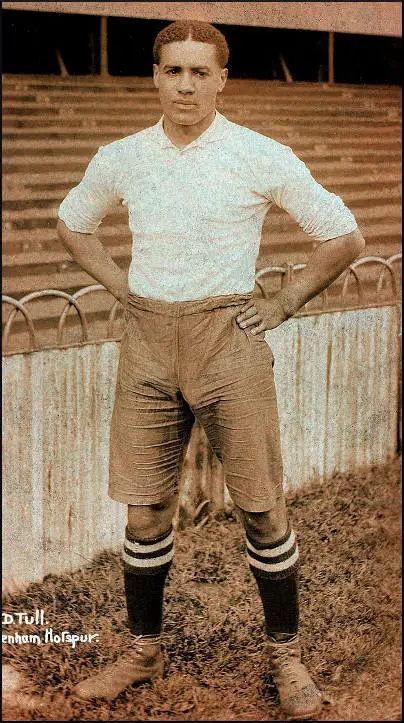
Walter Tull scored his first goal against Bradford City a week later. The Daily Chronicle pointed out that he was "a class superior to that shown by most of his colleagues". In a game against Bristol City on 9th October 1909, Tull was racially taunted by the crowd: "A section of the spectators made a cowardly attack upon him (Walter Tull) in language lower than Billingsgate...Let me tell these Bristol hooligans (there were but few of them in a crowd of nearly twenty thousand) that Tull is so clean in mind and method as to be a model for all white men who play football whether they be amateur or professional. In point of ability, if not in actual achievement, Tull was the best forward on the field." (15)
However, after playing just seven first-team games he was dropped and played the rest of the season in the reserves. Phil Vasili has raised questions about the reasons for his demotion: "Quite why Tull was never given another chance in the first team that season remains open to speculation, so I will. All that's certain is that he was good enough, when on form, to have merited selection. And there is nothing in the contemporary match reports to suggest a sustained loss of confidence. Wider social pressures may have played a role, especially if the racial abuse Tull received at Bristol was unnerving ambitious directors." (16)
Northampton Town
In the 1910-11 season he played in only three games. This included a goal against Manchester City. He also scored 10 goals in 27 league games with the reserves. Disillusioned by his lack of first-team appearances he was transferred for what was said to be a "heavy transfer fee" to Northampton Town in the Southern League. He was signed by Herbert Chapman who was later to become a highly successful manager of Huddersfield Town and Arsenal. Chapman had originally played under Britain's first black player Arthur Wharton, when he was the coach of Stalybridge Rovers. Chapman, Tull and Wharton were all from Methodist backgrounds.
Chapman was only 30 years old in 1910 and created a revolution in football with his coaching methods. When he joined the club as a player in 1907 they were at the bottom of the Southern League. At the time the club was without a manager. As Chapman appeared to be an intelligent man it was suggested by the directors that he should become player-manager. He agreed to do the job on a temporary basis as he still wanted to work full-time as a mining engineer. (17)
At that time tactics were traditionally left to players to work out on the field. Chapman believed in discussing tactics before a game started. For example, Chapman noticed that teams had a tendency to defend in large numbers. Chapman devised a method of playing that drew the opposing defenders from their own goal, and then to hit them on the counter-attack. The strategy was highly successful and that season Northampton Town managed to avoid relegation. The following season they won the Southern League championship with a record 25 wins from 40 games, a record 55 points, and a record 90 goals.
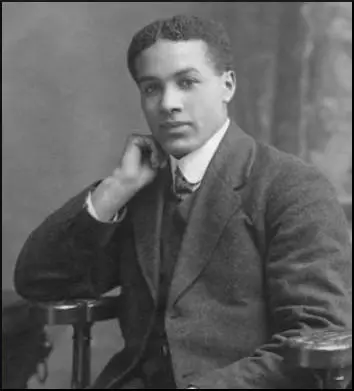
Chapman was always looking to strengthen his side and spent most of his spare-time watching football games. It was when he was watching Tottenham Hotspur reserves that he discovered Walter Tull. Chapman took great care in recruiting players: "I am always sorry for clubs who have to act hurriedly in seeking a new player, for under the most favourable conditions it is a tricky business and demands the closest consideration. It is not enough that a man should be a good player. There are all sorts of other important factors which have to be taken into account. This takes time. The longer I have been on the managerial side of the game, the more I am convinced that all-round intelligence is one of the highest qualifications of the footballer." (18)
He played most of his 110 games for Northampton Town as a wing-half. However, it was only after he switched him to inside forward that he showed his true form and scored four goals in one match. Tull became the club's most popular player. The Northampton Echo reported that: "Tull has now settled in the half-line in a manner which now places him in the front-rank of class players in this position." (19)
Edward Tull-Warnock
James and Helen Warnock arranged for Walter's brother, Edward Tull-Warnock, to train as a dentist at the Royal Faculty of Physicians and Surgeons in Glasgow. "Edward was an excellent dental student, taking second prize for both the Dall and Ash Awards." In 1910 he got his first job as an assistant dentist in Birmingham. Upon arriving at the practice, he was met by the dentist, who exclaimed "My God, you're coloured! You'll destroy my practice in 24 hours!" Edward decided to return home and work with his father.
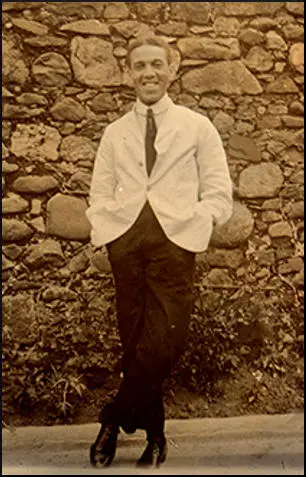
After the death of James Warnock on 4th August, 1914, aged 59 of chronic nephritis, Edward took over his father's dental business at 419 St Vincent Street, Glasgow. It has been claimed that he was probably Britain's first black dentist. He married Elizabeth E. Hutchinson on 28th September 1918 and in 1920 they had a daughter Jean. "Well known in sporting circles he was a member of the Turnberry Golf Club, and the winner of several trophies. In one year he won the Ballantrae Visitors' Cup, the Weir Trophy of the Turnberry Club, and the Glasgow Dental Cup." Edward also developed a local reputation for his fine singing voice. "His fine baritone voice was heard on many occasions as a singer of sacred music and also on the concert platform. In this sphere he excelled with his rendering of Negro Spirituals." (20)
Walter Tull & First World War
Other clubs wanted to sign Walter Tull and in 1914 Glasgow Rangers began negotiations with Northampton Town. However, before he could play for them the First World War was declared. Tull immediately abandoned his career and offered his services to the British Army. On 21st December, 1914, Tull became the first Northampton Town player to join the Football Battalion (17th Battalion of the Middlesex Regiment). At the time it was commanded by Major Frank Buckley.
The Army soon recognized Tull's leadership qualities and he was quickly promoted to the rank of sergeant. Tull arrived in France on 18th November 1915. He was initially billeted at Les Ciseaux, 16 miles from the front line. He had still not seen action when he wrote a letter to Edward Tull-Warnock in January 1916: "For the last three weeks my Battalion has been resting some miles distant from the firing line but we are now going up to the trenches for a month or so. Afterwards we shall begin to think about coming home on leave. It is a very monotonous life out here when one is supposed to be resting and most of the boys prefer the excitement of the trenches." (21)
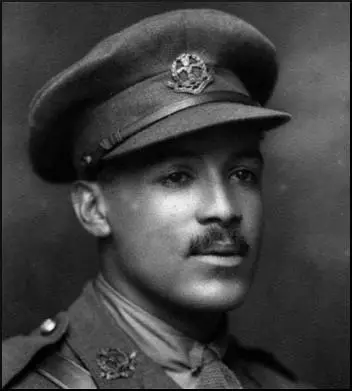
However, once on the Western Front, he found life difficult. In May 1916, he was sent home suffering from "acute mania" (also called shellshock). He soon recovered and was back in action by 20th September. Tull took part in the major Somme offensive, which resulted in 420,000 British casualties. Tull survived this experience but in December 1916 he developed trench fever and was sent home to England to recover. (22)
Walter Tull had impressed his senior officers and recommended that he should be considered for further promotion. When he recovered from his illness, instead of being sent back to France, he went to the officer training school at Gailes in Scotland. Despite military regulations forbidding "any negro or person of colour" being an officer, Tull received his commission in May, 1917.
Walter Tull became the first Black combat officer in the British Army. As Phil Vasili has pointed out in his book, Colouring Over the White Line: "According to The Manual of Military Law, Black soldiers of any rank were not desirable. During the First World War, military chiefs of staff, with government approval, argued that White soldiers would not accept orders issued by men of colour and on no account should Black soldiers serve on the front line." (23)
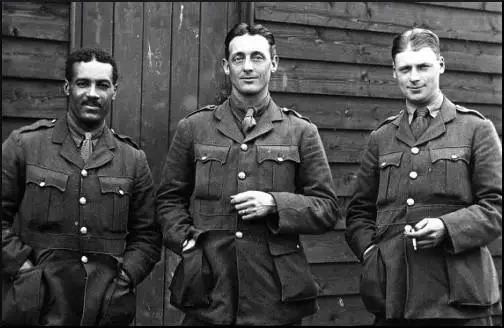
Lieutenant Walter Tull was sent to the Italian front. This was an historic occasion because Tull was the first ever black officer in the British Army. He led his men at the Battle of Piave and was mentioned in dispatches for his "gallantry and coolness" under fire. "You were one of the first to cross the river Piave prior to the raid on 1st-2nd January, 1918, and during the raid you took the covering party of the main body across and brought them back without a casualty in spite of heavy fire." (24)
Tull stayed in Italy until 1918 when he was transferred to France to take part in the attempt to break through the German lines on the Western Front. On 25th March, 1918, 2nd Lieutenant Tull was ordered to lead his men on an attack on the German trenches at Favreuil. Soon after entering No Mans Land Tull was hit by a German bullet. Tull was such a popular officer that several of his men made valiant efforts under heavy fire from German machine-guns to bring him back to the British trenches. These efforts were in vain as Tull had died soon after being hit. One of the soldiers who tried to rescue him later told his commanding officer that Tull was "killed instantaneously with a bullet through his head." (25)
Tull's body was never found. On 17th April 1918, Lieutenant Pickard wrote to Walter's brother and said: "Being at present in command (the captain was wounded) - allow me to say how popular he was throughout the Battalion. He was brave and conscientious; he had been recommended for the Military Cross, and had certainly earned it, the Commanding Officer had every confidence in him, and he was liked by the men. Now he has paid the supreme sacrifice; the Battalion and Company have lost a faithful officer; personally I have lost a friend. Can I say more, except that I hope that those who remain may be true and faithful as he." (26)
Campaign for War Medal
The family of Walter Tull never received the Military Cross. The Ministry of Defence has claimed that there is no record of the Military Cross recommendation was found in Tull's service files at the National Archives. Phil Vasili has argued that it is possible that there are political reasons for this: "Walter Tull was made an officer at a time when the Army was desperately short of men of officer material. I’m convinced that to have given him his Military Cross would have admitted to the powers-that-be at the War Office that rules had been broken in commissioning a black man. But his promotion illustrated the absurdity of their thinking, that white soldiers would not respect black officers."
Edward Tull-Warnock continued with the campaign until his death on 3rd December 1950. Phil Vasili played an important role in this with the publication of his book, Colouring Over the White Line (2000). This was followed by Walter Tull, Officer, Footballer: All the Guns in France Couldn't Wake Me (2009). Dan Lyndon published Walter Tull: Footballer, Soldier, Hero in 2011.
In 2012 Michael Morpurgo, the author of the novel Warhorse (2007), started an online petition urging "the Government to take up Walter’s case – and finally award him his Military Cross posthumously." Morpurgo hopes that eventually there might be a statue of Walter Tull outside the Imperial War Museum in London as "a tribute to one man’s fight against prejudice and evil and an inspiration to new generations". (27)
Walter Tull Coin
It was announced on 3rd September, 2014 that Walter Tull will be remembered on a special set of coins released by the Royal Mint as part of commemorations of the centenary of the First World War. The coin, featuring a portrait of the officer with a backdrop of infantry soldiers going "over the top”, will be one of a set of six £5 coins to remember the sacrifice made by so many during the war. (28)
Primary Sources
(1) Phil Vasili, Oxford Dictionary of National Biography (2004-2014)
Tull, Walter Daniel John (1888–1918), footballer and army officer, was born on 28 April 1888 at 57 Walton Road, Folkestone, Kent, the fifth child of Daniel Tull (c.1856–1897) and his wife, Alice Elizabeth Palmer (c.1853–1895). Daniel, a carpenter, was born in Barbados and in 1876 settled in Folkestone. Through attendance at the Grace Hill Wesleyan Methodist Chapel he met Alice, born in Hougham, Kent. She gave birth to six children. In 1896, a year after the death of Alice from cancer, Daniel married her cousin Clara Alice Susannah Palmer. They produced a daughter Miriam, born on 11 September 1897. Three months later Daniel died from heart disease. Unable to cope with five stepchildren and an infant child of her own, Clara placed the youngest boys - Edward, eleven, and Walter, nine - in the children's home and orphanage in Bonner Road, Bethnal Green, on 24 February 1898. Edward was adopted in 1900 by the Warnock family of Glasgow, where he qualified as a dentist in 1912 and practised, probably as the first black dentist in Britain, at 419 St Vincent Street (as Edward James Alexander Tull-Warnock) until his death in 1950.
(2) Jeffrey Green, Black Edwardians (1998)
Walter Tull's first match for Spurs was at their first division debut in 1909. The London team had crowds that numbered thirty thousand, and they thrilled to Tull's skills. He was an inside forward, with the role of supplying the winger with good passes. The Daily Chronicle observed that Tull was a class above many of his team mates. It was felt that had Spurs obtained a decent winger then the combination would have been the best in England. Newspaper reports of Spurs matches refer to Tull as "West Indian" and "darkie".
(3) The Daily Chronicle (9th October, 1909)
Tull's... display on Saturday must have astounded everyone who saw it. Such perfect coolness, such judicious waiting for a fraction of a second in order to get a pass in not before a defender has worked to a false position, and such accuracy of strength in passing I have not seen for a long time. During the first half, Tull just compelled Curtis to play a good game, for the outside-right was plied with a series of passes that made it almost impossible for him to do anything other than well.
Tull has been charged with being slow, but there never was a footballer yet who was really great and always appeared to be in a hurry. Tull did not get the ball and rush on into trouble. He let his opponents do the rushing, and defeated them by side touches and side-steps worthy of a professional boxer. Tull is very good indeed.
(4) Newspaper report on the game between Tottenham Hotspur and Bristol City (October, 1909)
A section of the spectators made a cowardly attack upon him (Walter Tull) in language lower than Billingsgate...Let me tell these Bristol hooligans (there were but few of them in a crowd of nearly twenty thousand) that Tull is so clean in mind and method as to be a model for all white men who play football whether they be amateur or professional. In point of ability, if not in actual achievement, Tull was the best forward on the field.
(5) Lieutenant Pickard, letter to Edward Tull-Warnock (17th April 1918)
Of course you have already heard of the death of 2nd Lieutenant W. D. Tull on March 25th last.
Being at present in command (the captain was wounded) - allow me to say how popular he was throughout the Battalion. He was brave and conscientious; he had been recommended for the Military Cross, and had certainly earned it, the Commanding Officer had every confidence in him, and he was liked by the men.
Now he has paid the supreme sacrifice; the Battalion and Company have lost a faithful officer; personally I have lost a friend. Can I say more, except that I hope that those who remain may be true and faithful as he.
(6) Phil Vasili, Colouring Over the White Line (2000)
According to The Manual of Military Law, Black soldiers of any rank were not desirable. During the First World War, military chiefs of staff, with government approval, argued that White soldiers would not accept orders issued by men of colour and on no account should Black soldiers serve on the front line. Forty-four years earlier the War Office argued that the army should be wholly White, despite the presence of Blacks in the army since at least the sixteenth century, an African trumpeter being part of Henry VII's court in 1507. In fact Britain had been ruled by an African Roman, Septemius Severus, during the third century. In that century a division of Moors was stationed at Hadrian's Wall. While the Romans could accept a rainbow army, the British elite, sixteen hundred years later, could not. At the War Office in 1886, a veteran of the Anglo-Asante War of 1873-74, Lord Wolseley, pleaded: "Let us keep our British Regiments strictly British ... If ever we begin to fill our ranks with alien races our downfall will most surely follow." But Black soldiers did enlist and fight in the First World War. Laura Tabili, in We Ask for British Justice - Workers and Racial Difference in Late Imperial Britain (1994) has argued that there was a "Coloured" unit of UK Blacks in the British Army. Tull's brother William was a sapper in the Royal Engineers, the same regiment as Charles Augustus Williams, the Barbadian father of Doncaster Rovers centre-half Charlie Williams. Eugene and John Brown, the Nigerian father and uncle of Roy Brown, a club colleague of Stanley Matthews at Stoke City in the late 1930s, served in the 5th North Staffordshire Regiment while attending college in Britain. Eugene was killed in action, while John ended his war days in hospital. There were numerous other Blacks that also broke the colour bar. However, it was not until 1918, a time of severe manpower shortage, that the Army Council officially allowed British and colonial Blacks to sign up in the UK.
(7) The Guardian (25th March, 1998)
Playing at inside left, Tull's future looked bright. Then, in a game at Bristol City in 1909, he was racially abused by fans in what the Football Star called "language lower than Billingsgate". The incident was deeply traumatic for Tull and the club. The following season, he played only three first-team games; the season after, he was sold for "a heavy transfer fee" to Northampton Town. There, Tull flourished again, playing 110 first-team games for the club, mostly at wing-half. He was probably their biggest star. In 1914, he was on the point of signing for Glasgow Rangers. Then came war. It was perhaps inevitable, given the spirit of muscular Christianity in which he was raised, that Tull should make a swift transition from sport to war. What was less inevitable was that he should conduct himself with even more distinction on the battlefield than on the playing field. Yet he did. He enlisted in the 17th (1st. Football) Battalion of the Middlesex Regiment, alongside many other professional footballers. By 1916, he had been made a sergeant. Among other actions, he was involved in the murderous first battle of the Somme. We can only guess the horrors he endured, but they did not break him.
(8) In his book Goodbye to All That, Captain Robert Graves wrote about what happened when a popular officer was wounded in No Mans Land.
Sampson lay groaning about twenty yards beyond the front trench. Several attempts were made to rescue him. He was badly hit. Three men got killed in these attempts: two officers and two men, wounded. In the end his own orderly managed to crawl out to him. Sampson waved him back, saying he was riddled through and not worth rescuing; he sent his apologies to the company for making such a noise. At dusk we all went out to get the wounded, leaving only sentries in the line. The first dead body I came across was Sampson. He had been hit in seventeen places. I found that he had forced his knuckles into his mouth to stop himself crying out and attracting any more men to their death.
(9) Walter Tull's commanding officer in the 23rd Battalion of the Middlesex Regiment, sent a letter to Edward Tull after the death of his brother (March, 1918)
He was popular throughout the battalion. He was brave and conscientious. The battalion and company had lost a faithful officer, and personally I have lost a friend.
(10) Major Robin Wheeler, Army Legal Services, email to John Simkin (8th February, 2008)
Just to alert you to the fact that there were NOT military regulations ‘forbidding “any negro or person of colour” from being an officer.’ The Manual of Military Law 1914 (p.471) has regulations regarding aliens and their enlistment into the British Army, which prevent them holding any other than an honorary commission, but Walter Tull was not an alien, he was a British citizen. His father came to England from Barbados in 1876 and married a girl from Kent; Walter Tull was born in Folkestone in 1888. He was a British citizen entitled to hold an active commission, which he did. He did remarkably well to rise from private to Lt. in the space of 2 years – there was no military legislation to prevent him doing that.
(11) Phil Vasili, email to John Simkin (March, 2008)
I had a discussion with the people at the MOD last week about this. Quite simply they are wrong and their legal department is quoting selectively. Tull was appointed to the Special Reserve of Officers. This is what their regulations in the Short Guide to Obtaining a Commission in the Special Reserve of Officers, published by His Majesty's Stationary Office, 1912, stated: "(To qualify for a commission) a candidate must be of pure European descent, and a British born or naturalised British subject."
The Manual of Military Law (1914) authorized alien soldiers, including any negro or person of colour to hold honorary rank but they must not exercise any actual command or power. This rule created a contradiction because the British Nationality and Status of Aliens Act 1914 affirmed the status of all those born within the British Empire as natural born British subjects. The act gave all peoples of Empire equivalent legal status to those born within the UK. However, if there was ambiguity as to the ethnic criteria needed to become an officer, this was spelled out on page 198 of the Manual, confirming the regulation contained in the Short Guide of 1912, governing the Special Reserve of Officers (to which Tull was appointed to a commission in 1917): Commissions in the Special Reserve of Officers are given to qualified candidates who are natural born or naturalised British subjects of pure European descent.
(12) Major Robin Wheeler, Army Legal Services, email to John Simkin (1st May, 2008)
It seems I may unwittingly have led you astray (though not on the facts as I was given them). We have been contacted by the MP for a Mr. Vasili, who claims that what I told you re Walter Tull was wrong, as he was not a Regular Officer, but on the Special Reserve of Officers (which it is true to say would not be unusual given the circumstances). I have seen no proof of this assertion, but he has read the information he has (I think a copy of the Service Record provided by the family) over the phone to the US of S to back this up. The MML of 1914 does state at p. 198 that "Commissions in the Special Reserve of Officers are given to qualified candidates who are natural born or naturalised British subjects of pure European descent."
That would logically rule out Lt. Tull as his father was from Barbados. I note that the wording being quoted before was from the part of the MML that dealt with the requirements for Regular Officers – I am a little suspicious that we have now shifted ground to where some racial prohibition did exist, and as I say I have not seen any proof myself – you would have to look at the Service Record in the PRO.
If you do find I have caused you to alter the website unnecessarily, I can only apologise. As you will appreciate, we do not have the time that Mr. Vasili has to comb the PRO!
(13) Dennis Ellam, The Daily Mirror (9th March, 2013)
On the football field, he was a star – on the battlefield, he was a hero.
And yet Walter Tull, a grandson of black slaves who played for Tottenham Hotspur and died for Britain in World War One, has been largely forgotten, the Sunday People reports.
Now, 95 years after he was killed on the Western Front, a campaign has been launched to preserve the memory of the British Army’s first black officer and one of the country’s first black professional footballers.
To this day, mystery surrounds the fact that Walter was never given a bravery medal, despite a claim that he was recommended for one.
Was it due to the colour of his skin?
Michael Morpurgo, author of the movie blockbuster Warhorse, researched the story for a recent book and believes recognition is long overdue.
He said: “We should all know about Walter. He was a hero of his time and, in so many ways, for our time too.
"But until recently, like most of us, I had never heard of him.”
It took courage to be a black man in early 20th Century Britain.
Black faces were rare and Walter sometimes ran on to the pitch to face jeering crowds.
All too soon he would need all his courage to lead men into battle.
It is a measure of the devotion Walter’s men held for him that they made repeated attempts to find his body but were driven back by heavy machinegun fire.
Today the only memorial to Walter Tull is in Northampton, where his name is listed in the football club’s garden of remembrance.
But a campaign to honour the gallant footballer and soldier is gaining momentum.
Meanwhile the mystery of why he never received the Military Cross remains. There is no official record that his name was ever put forward, despite the claim by the other officer.
One theory is that promoting a black man to officer was against the rules and it might have been embarrassing for generals to see a gallantry medal pinned to his chest....
An online petition is aiming for 100,000 signatures to urge the Government to take up Walter’s case – and finally award him his Military Cross posthumously.
That would be a fitting tribute as the centenary of the start of the Great War approaches.
And it would remind us that men of all creeds and colours sacrificed their lives.
Michael Morpurgo’s novel A Medal For Leroy is based loosely on Walter’s story.
One day, he hopes, there might be a statue of Walter outside the Imperial War Museum in London – a tribute to one man’s fight against prejudice and evil and an inspiration to new generations.
(14) Phil Vasili, interview, (9th March, 2013)
Walter Tull was made an officer at a time when the Army was desperately short of men of officer material.
I’m convinced that to have given him his Military Cross would have admitted to the powers-that-be at the War Office that rules had been broken in commissioning a black man.
But his promotion illustrated the absurdity of their thinking, that white soldiers would not respect black officers.
(15) The Guardian (3rd September, 2014)
The first black officer in the British Army will be remembered on a special set of coins released by the Royal Mint as part of commemorations of the centenary of the first world war.
Kent-born Walter Tull, who was promoted to officer rank during the war despite a ban on black officers, died in battle in 1918.
Tull was also one of the first black footballers to play at the highest level in the UK, appearing for Tottenham before moving to Northampton Town, where he is commemorated with a statue.
Campaigners, including the former Tottenham player Garth Crooks, petitioned the government last year to posthumously award Tull a Military Cross for his heroism.
He fought on the Somme in 1916 and became the first black combat officer in the British army, despite a military rule excluding “negroes” from exercising actual command. Tull was cited for “gallantry and coolness” for leading his company of 26 men to safety in Italy, but returned to northern France where he was killed in March 1918.
The coin, featuring a portrait of the officer with a backdrop of infantry soldiers going “over the top”, will be one of a set of six £5 coins to remember the sacrifice made by so many during the war.
References
(1) Phil Vasili, Oxford Dictionary of National Biography (2004-2014)
(2) Phil Vasili, Colouring Over the White Line (2000) page 40
(3) Clerk of the Elham Union, letter to Reverend Stephenson (22nd January, 1898)
(4) Phil Vasili, Colouring Over the White Line (2000) page 41
(5) Mike Gow, Dental History Magazine (Autumn 2011)
(6) J. W. Butcher, letter to Children's Home and Orphanage (11th October, 1900)
(7) The Football Star (20th March, 1909)
(8) Buenos Aires Herald (8th June, 1909)
(9) Phil Vasili, Colouring Over the White Line (2000) page 43
(10) James Walvin, The People's Game (1994) page 89
(11) Philip Gibbons, Association Football in Victorian England (2001) page 277
(12) Athletic News (29th October, 1887)
(13) Jeffrey Green, Black Edwardians (1998)
(14) The Daily Chronicle (9th October, 1909)
(15) Phil Vasili, Colouring Over the White Line (2000) page 50
(16) Phil Vasili, Colouring Over the White Line (2000) page 48
(17) Herbert Chapman, Herbert Chapman on Football (1934) page 2
(18) Herbert Chapman, Herbert Chapman on Football (1934) page 25
(19) Northampton Echo (15th March, 1913)
(20) Mike Gow, Dental History Magazine (Autumn 2011)
(21) Walter Tull, letter to Edward Tull-Warnock (January, 1916)
(22) Phil Vasili, Colouring Over the White Line (2000) page 52
(23) Phil Vasili, Colouring Over the White Line (2000) page 53
(24) 23rd Battalion of the Middlesex Regiment Diary (January, 1918)
(25) Major B. S. Poole, letter to Edward Tull-Warnock (12th April, 1918)
(26) Lieutenant Pickard, letter to Edward Tull-Warnock (17th April 1918)
(27) Dennis Ellam, The Daily Mirror (9th March, 2013)
(28) The Guardian (3rd September, 2014)
Student Activities
Walter Tull: Britain's First Black Officer (Answer Commentary)
Football and the First World War (Answer Commentary)
Football on the Western Front (Answer Commentary)

